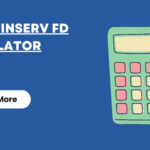SIP Calculator
When it comes to saving and investing money in India, two of the most popular options are Systematic Investment Plans (SIPs) and Fixed Deposits (FDs). Both have their own merits and cater to different financial goals. In this guide, we’ll dive deep into the key differences between SIP and FD, helping you decide which option suits your needs. We will also explore real-life use cases where one may be better than the other.
What is SIP?
A Systematic Investment Plan (SIP) is a method of investing in mutual funds. Through SIPs, you can invest a fixed amount regularly (monthly or quarterly) in mutual funds. The amount is automatically debited from your bank account, allowing you to buy units of the fund. SIPs offer the benefit of rupee cost averaging and the power of compounding over time.
Benefits of SIP:
- Higher returns over the long term.
- Flexibility in investment amounts.
- Ideal for wealth creation and long-term goals.
- Option to diversify across equity, debt, and hybrid funds.
- Tax benefits under Section 80C (for specific types of funds like ELSS).
What is FD?
A Fixed Deposit (FD) is a traditional investment option where you deposit a lump sum of money with a bank or financial institution for a fixed tenure at a predetermined interest rate. At the end of the tenure, the principal amount along with the accumulated interest is returned to you.
Benefits of FD:
- Guaranteed returns.
- Low risk, as it’s not linked to market performance.
- Fixed interest rates throughout the tenure.
- Suitable for short-term and risk-averse investors.
- Tax-saving options available under Section 80C for certain FDs (with a lock-in period of 5 years).
SIP vs FD: Key Differences
| Parameters | SIP (Systematic Investment Plan) | FD (Fixed Deposit) |
|---|---|---|
| Risk | Moderate to High (depending on fund) | Low (no market exposure) |
| Returns | Market-linked; can be higher over time | Fixed; pre-determined by bank |
| Liquidity | Highly liquid; can withdraw anytime | Low liquidity; penalty on premature withdrawal |
| Tenure | No fixed tenure (you can invest for 1 year to several years) | Fixed tenure (ranging from 7 days to 10 years) |
| Taxation | Gains taxed based on type of mutual fund (LTCG or STCG) | Interest is fully taxable under regular income |
| Investment Flexibility | Can start with as low as ₹500/month | Lump sum investment only |
SIP vs FD: Use Cases
Use Case 1: Young Professional Seeking Wealth Creation
A 28-year-old professional, Amit, wants to create a corpus for buying a house in 10 years. Amit has a high-risk appetite and can invest ₹5,000 per month. He opts for a SIP in an equity mutual fund. Over 10 years, the average returns of 12-15% can potentially give him a much higher corpus than a traditional FD.
Conclusion: For long-term goals with a higher risk tolerance, SIPs in equity mutual funds are more suitable than FDs.
Use Case 2: Retired Individual Looking for Stable Income
A 60-year-old retiree, Mr. Sharma, prefers to park his lump sum retirement funds in safe investment options. He wants guaranteed returns and low risk. Mr. Sharma chooses an FD with a tenure of 5 years, locking in an interest rate of 6.5%.
Conclusion: For those seeking stable returns with no market risk, FDs are a better option than SIPs.
Use Case 3: Investor with Short-Term Goals
Neha, 35, is planning a vacation in 3 years and wants to save for it. She has a low-risk tolerance and wants to ensure her capital is protected. Neha decides to go with a debt mutual fund SIP, which offers moderate returns with low risk.
Conclusion: SIPs in debt funds can be a suitable alternative to FDs for short-term goals, with the potential for slightly better returns.
SIP vs FD: Which One is Best for You?
- SIP is best for individuals with a long-term investment horizon, those comfortable with market-linked returns, and those seeking wealth creation. If you can handle market fluctuations and aim for higher returns over time, SIP is the way to go.
- FD is best for individuals seeking safety, stable returns, and a guaranteed interest rate. If you’re risk-averse and looking for short- to medium-term goals, an FD is a safer and more predictable option.
Conclusion
Choosing between SIP and FD depends on your financial goals, risk tolerance, and investment horizon. For those focused on long-term growth and who can tolerate market risks, SIPs offer higher returns. On the other hand, FDs are ideal for conservative investors looking for assured returns without market risks.
Keywords to focus on for SEO:
- SIP vs FD
- SIP or FD which is better
- FD vs SIP in India
- Best investment options in India
- Fixed Deposit vs Mutual Funds
- Long-term vs short-term investments in India










